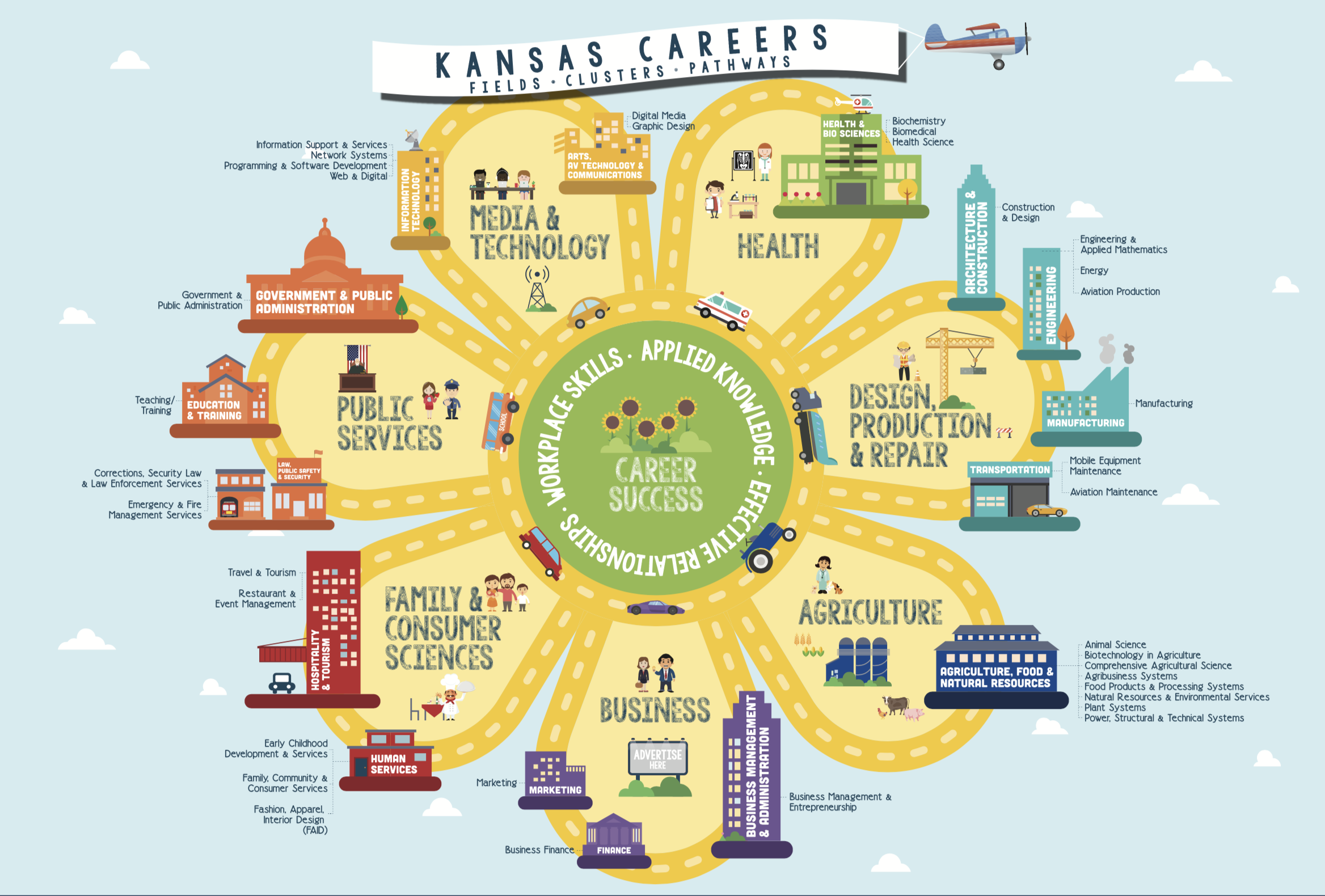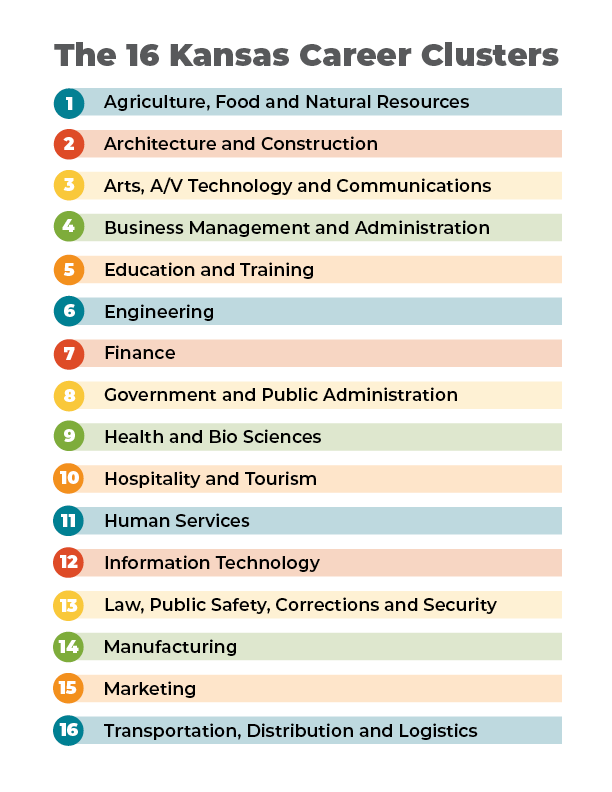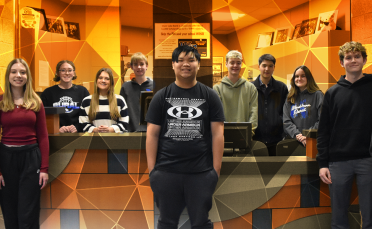How the Kansas Career Sunflower Works: A Parent's Perspective

When I was introduced to the Kansas Career Sunflower through my role here at HirePaths, I had a lot of questions. I was told it was an illustration of how the Kansas State Department of Education (KSDE) has structured career and technical education (CTE) in our state. However, as the parent of a seventh grader, I needed more information to fully understand what I was looking at and how it’s used in schools.
I decided to go straight to the source to help my fellow parents understand how our public schools deliver career exploration and education efforts — and how we as parents fit into the process.

What IS This Thing?
Crystal Roberts, an education program consultant with KSDE, was able to shed some light on the subject. She explained that each of the seven petals of the Kansas Career Sunflower represents a career field:
- Agriculture
- Business
- Design, production and repair
- Family and consumer sciences
- Health
- Media and technology
- Public services
“Within those career fields, there are 16 career clusters,” Roberts said. “We take those clusters and organize academic and occupational knowledge and skills into course sequences. Then we break things down into 36 pathways for consideration during secondary (high) school and beyond to two- and four-year colleges as well as the workplace.”
Roberts explained that Kansas has chosen to focus on 36 career pathways, which serve as ways for students of all ages to learn about what they can do with their future. KSDE envisions this career exploration happening on three levels:
- Teachers begin the CTE sequence of courses in elementary school, teaching about the seven fields of work and the function of jobs within a society.
- In middle school students dig deeper, exploring the 16 clusters through field trips, guest speakers and other high-level introductory activities.
- In high school, with their interests and aptitudes more solidified, students begin to focus on select pathways and learn how to embark on a career through classes or other experiences like internships and apprenticeships.
While Kansas schools aren’t yet able to offer coursework in all 36 pathways, they’re working on expanding their programs and building partnerships with that goal in mind.
“The connection to future goals hopefully helps motivate students to work harder and enroll in more rigorous courses related to the field they’re interested in,” said Roberts.

Why Should Parents Care?
The model is part of a national movement to help youth identify their skills and natural aptitudes rather than simply focus on their interests. Learn the difference.
“Lots of people want to ask what kids are interested in,” said Stacy Smith, assistant director at KSDE. “You could say you enjoy football and you’re going to grow up to be a quarterback for the Denver Broncos, but in reality that’s a very narrow slice of opportunity — your student may have an interest, but not the aptitude or the skills. How do we help students understand where their skills are and how they might become aptitudes?”
Simply put, by taking a more comprehensive, holistic view of what it takes to make a career successful — interests and skills — schools nationwide are broadening occupational training to include topics beyond traditional vocational fields. This often results in a career that’s personally and financially rewarding.
“When we were growing up, those vocational training paths aligned with what were traditionally called ‘blue collar jobs’ like welding or plumbing,” Smith said. These opportunities are still important for students, but today we have taken that strategy — which is highly effective — and applied it to other occupations like health care and IT. We call these ‘gold collar jobs,’ because there’s a little bling that comes with that paycheck — many of these jobs pay really well.”
These jobs are also more readily available in Kansas than some others are. Nationally, there are 79 identified career pathways, but not all of them make sense for Kansas workers. The 36 pathways Kansas has adopted align with our state’s economy and workforce, according to Smith.
“You can earn a good living as a sound designer or as a theatrical performer, but the demand for those occupations in Kansas isn’t at a scale our economy can support,” Smith said.
What’s My Role as a Parent?
I asked how I might help support career exploration as a parent, and Roberts had some recommendations.
“When kids are learning about fields, clusters and pathways, we’d love for parents to be having conversations at home using the same language,” she said. “Ask your children what they did at that career fair or what they learned about on the field trip. Ask what they liked or didn’t like about what they learned — it’s all about the communication.”
When kids get to high school, it’s also about knowing what’s on the petals of the flower and which of those clusters and pathways the child has an aptitude for. Many districts use software like Xello, Naviance or YouScience to help kids determine their natural strengths. Roberts added that parents can introduce different pathways to their child outside of school, and they can even work with school counselors to help their kids get started down paths they’re interested in as part of their formal academic plan of study.
“Learn what the school has to offer, what pathways are available there and what options there are in your community if it comes to volunteering somewhere or getting a job shadowing experience,” she said. “Watch for things that spark conversations.”
If your child’s high school doesn’t offer classes based on their pathway of interest, Roberts suggested checking with local technical schools or community colleges to see if any dual-credit courses are available. In many cases, high school students can take college courses for both high school and college credit, and sometimes students can even take such classes at no cost to the student’s family.
The Pathway Less Traveled
While the established KSDE framework provides structure and direction for K-12 public schools, it’s meant to serve as guidance rather than a strict mandate on how a young person should explore career possibilities. According to Smith, the Kansas Career Sunflower is a great way to begin thinking about the journey that’s in front of students — it’s just not the only way.
“Each student is unique and their journey can be as unique as they need it to be,” he said. “We have 36 pathways, but that doesn’t mean a student can’t create their own pathway by merging the experiences they find throughout the courses. It’s up to the student, his or her parents and school counselors to find those ‘a la carte’ experiences that allow the child to play, learn about and ultimately decide if they want to invest in a career path down the road.”
Alison Rogers is a content marketer at New Boston Creative Group, the brains behind HirePaths. She has a 12-year-old son named Sam who wants to be a meteorologist someday so he can chase tornadoes professionally. She’s hoping he’ll find an interest in another career pathway before he graduates!



